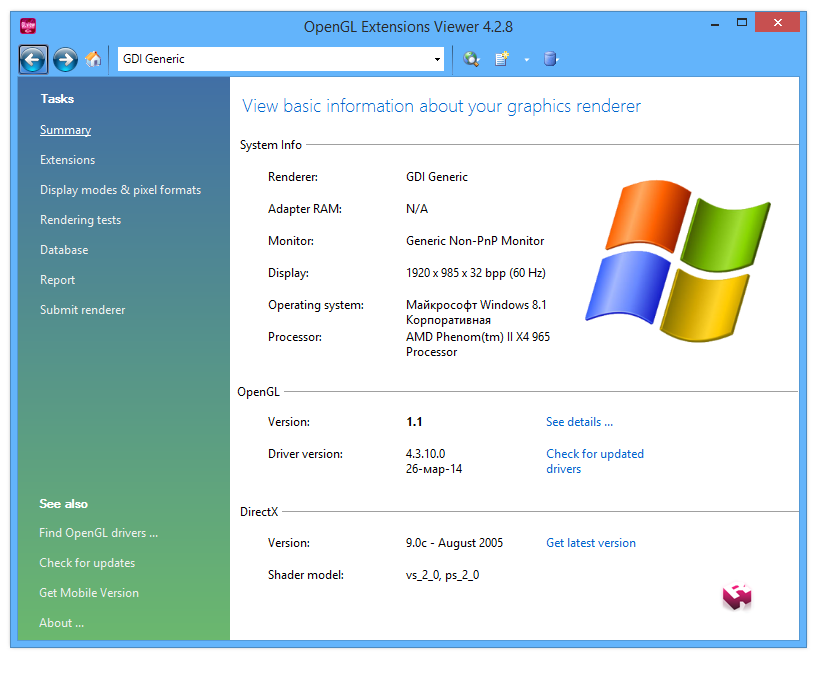
An example case would be the GL_GREMEDY_string_marker extension, which was initially a private extension, is now included in the OpenGL Extension Registry.

GLSL's extension version (ARB_shader_objects) was rather different from the core 2.0 functionality.Īnyone may develop extensions for the OpenGL® API the community gives feedback. In some cases, there are differences between extension and the core function.
#OPENGL EXTENSIONS VIEWER DRIVERS#
Often, the original extension's developer allows other companies to also code it into their drivers without royalty requirements. In some cases, but not many, a proprietary extension becomes ARB, then core. Most likely, an extension is already of type EXT, then becomes ARB, then core. Proprietary extensions which prove their worth can become ARB approved (such as GL_ARB_multitexture) and shortly after become core.
#OPENGL EXTENSIONS VIEWER WINDOWS#
WGL = Windows Open GLġ, Experimental extensions should not be used in a production environment as they are subject to removal from implementation. International Business Machines Corporation, or simply IBM. Regardless of the vendor prefix, vendor-specific OpenGL extensions may be implemented an/or licensed by multiple hardware vendors to ensure compatibility. GL_APPLE means that this extension will only be found on implementations that are on Macintoshes. GL_NV means that only NVIDIA hardware will implement this extension. These are extensions that are most likely to enter later versions of the core OpenGL, and if they do, there will likely be few changes made to them.Īll other prefixes are vendor-specific.

These extensions are multi-vendor as well, but they are specifically approved by the OpenGL ARB. There is a higher level of EXT extensions, called GL_ARB. It is also a signal to the user of OpenGL that this extension may find its way into other implementations. This does not ensure that they are implemented by all IHVs, but it means that the extension is available to be implemented by multiple vendors. They can be implemented by any implementation. The name of each extension starts with a prefix, specifying what type it is.Įxtensions that start with GL_EXT are generic extensions. There are many automatic tools for loading them.Įxtensions fall into 3 broad categories: vendor-specific, generic, and ARB-approved. OpenGL extensions must be loaded dynamically at runtime. For more information, see Get Context Info. It is possible to check at run-time whether an extension is supported or not. That version is often (but not always) the minimum version that the extension can be used together with. specifies a modification to that core version's spec. The exception to this is core extensions, which is explained below.Īll extensions are written against a version of OpenGL. For example, the extension GL_ARB_multitexture (which has been adapted into the core) contains the function glActiveTextureARB and the token GL_TEXTURE0_ARB. The name of the tokens and functions ends with the prefix of the extension. If an extension is supported on a specific computer, it means those tokens and/or functions can be used there. Quite a few of these extensions have been folded into the OpenGL core.Īn extension always contains at least one enum token, or one function. Many of these extensions are old and obsolete in modern programming practice they are listed for the sake of completeness. The extension registry has over 300 extensions listed.

The registry also contains guidelines for creating new extensions and has example C/C++ header files containing function entry points and token enums.

The OpenGL Extension Registry is maintained by the ARB and contains the technical specifications of all known OpenGL extensions.


 0 kommentar(er)
0 kommentar(er)
